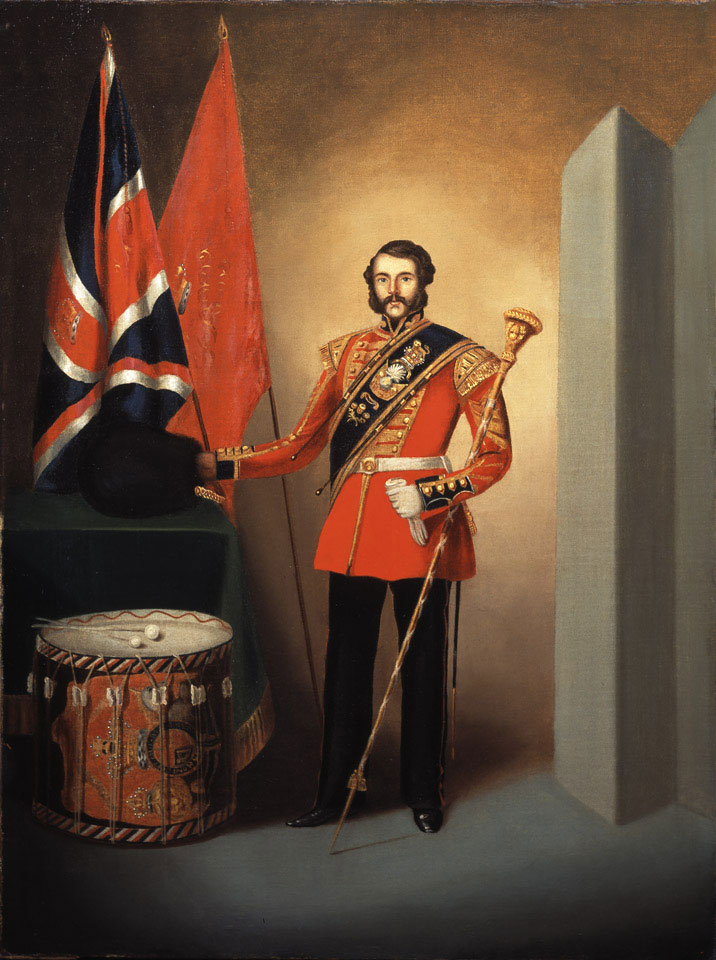
Online Collection
« Prev - 1 of 1 results - Next »
Drum Major, Grenadier Guards, 1870 (c)
Oil on canvas, artist unknown, 1870 (c).
Since their first introduction into the British Army, drums have been used both as a means of communication and to set the rate of march. They were of first importance for transmitting orders farther than vocal commands, so the drummer needed to be close to the commanding officer. He was also required to be intelligent and reliable in his beating, so that troops would execute the right manoeuvres. In battle, the drummer was always close to the command-centre and the Colours. When the drums were silenced it could signify that the battalion was hard-pressed or even overtaken. Drums, like Colours, became attractive trophies for enemy soldiers, symbolizing the destruction of their foes.
This portrait was thought to show Drum Major Samuel Potter, Coldstream Guards; however the sitter wears Grenadier Guards uniform. It is probable that the function - if not the appointment - of drum major, has existed as long as there have been drummers. References to the office of drum major appear as early as the 1590s, but the rank does not feature on regimental establishments until after 1660. Marching regiments all seem to have gone without an official drum major until 1810, although in practice an extra sergeant held the position. From 1881 they became known as sergeant-drummers, but the title of drum major was restored in 1928.
A special feature of the drum major is his staff, the motion of which keeps time. The drum major also wears a distinctive cross-belt, which carries symbolic drum sticks.
NAM Accession Number
NAM. 1975-08-26-1
Copyright/Ownership
Not NAM Copyright, Artist's Estate
Location
National Army Museum, Study Collection
Object URL
https://collection.nam.ac.uk/detail.php?acc=1975-08-26-1

